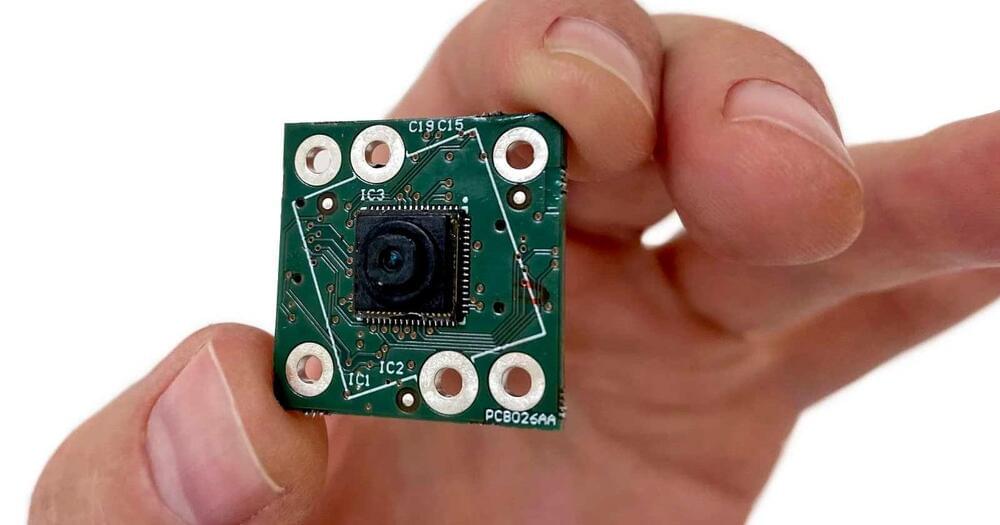We gift Chukwuemeka Obi one of our pioneer students an iPhone 6 phone to enable him to browse and attend Zoom meetings. We need more of these phones and laptops to gift our students.
Category: mobile phones – Page 90
Engineer who made USB-C iPhone now makes AirPods Pro repair possible
Pilonnel noticed that millions watch his videos, but very few actually attempt them. He wants to help people by making replacement parts available.
Users of Apple’s AirPods are well aware that the product they purchased is pretty much disposable. Once the rechargeable battery on the device gives way, there is no way to replace them; you need to buy new AirPods, unless you are ready to do the hard work yourself, with a little help, of course.
Ken Pillonel is no stranger to toying with Apple products. As an engineering student, he built the world’s first iPhone with a USB-C port and has previously shown us how the batteries in the AirPods can be replaced if you can 3D-print a new case.
Exploring the Simulation/YouTube.
The best part of Pillonel’s mods is that everything is published in GitHub repositories, and one only needs to spend some time going through the notes to get the desired changes.

Google’s A.I.-powered ‘multisearch,’ which combines text and images in a single query, goes global
Amid other A.I.-focused announcements, Google today shared that its newer “multisearch” feature would now be available to global users on mobile devices, anywhere that Google Lens is already available. The search feature, which allows users to search using both text and images at the same time, was first introduced last April as a way to modernize Google search to take better advantage of the smartphone’s capabilities. A variation on this, “multisearch near me,” which targets searches to local businesses, will also become globally available over the next few months, as will multisearch for the web and a new Lens feature for Android users.
As Google previously explained, multisearch is powered by A.I. technology called Multitask Unified Model, or MUM, which can understand information across a variety of formats, including text, photos, and videos, and then draw insights and connections between topics, concepts, and ideas. Google put MUM to work within its Google Lens visual search features, where it would allow users to add text to a visual search query.
“We redefined what we mean to search by introducing Lens. We’ve since brought Lens directly to the search bar and we continue to bring new capabilities like shopping and step-by-step homework help,” Prabhakar Raghavan, Google’s SVP in charge Search, Assistant, Geo, Ads, Commerce and Payments products, said at a press event in Paris.

Samsung hires former Qualcomm VP who is a semiconductor expert
Samsung has been on a hiring spree of top executives from reputed companies in the last few months. About a week ago, we reported that Samsung had hired two former Ericsson executives to its Samsung Networks team. Last December, Samsung roped in an ex-Mercedes designer, Hubert H. Lee, to lead its smartphone design team. Now, Samsung has now hired former Qualcomm Vice President Benny Katibian.
Benny previously worked for Qualcomm as the Vice President of the company’s engineering division. After joining Samsung, Benny will serve as the head of the Samsung Austin Research Center (SARC) and the Advanced Computing Lab (ACL), which are the core R&D centers of Samsung Electronics USA, as per Business Korea.
According to reports, Benny Katibian is an expert in semiconductors and was in charge of self-driving systems, including ADAS (Advanced Driving Assistance Systems) at Qualcomm. Later, he also served as the COO of the North American Cooperation in Xiaopeng, a Chinese electric car company. He also worked as the head of the development of self-driving chips.



Pioneering Transhumanism: a conversation with Natasha Vita-More
Transhumanism is the idea that technology and evidence-based science can and should be used to augment and improve humans in order to overcome the limitations that evolution has left us with. As the name suggests, it stems from humanism, but it adds an optimism that cognitive and physical improvement is both possible and desirable.
On the face of it, the idea that humans should be permitted to use technology to live healthier and happier lives does not sound dangerous, or even contentious. But it does provoke strong opposition: in 2004, Francis Fukuyama called transhumanism “the world’s most dangerous idea”. The force of that claim is somewhat undermined when you consider how wildly wrong his previous big idea turned out to be: in 1992 he declared that because the Cold War ended with the collapse of the Soviet Union, history had come to an end. Nevertheless, Fukuyama is not alone in fearing transhumanism.
Some people object to transhumanism because they think we should strive to be “natural”, and to be content with what evolution – or their god — have given us. But of course the definition of what is “natural” changes over time. Nature didn’t endow us with spectacles, and few people now argue they should be banned. Now we have cochlear implants, and many people feel that their smartphones are extensions of themselves. In the future we will have the option of raising our IQ with smart drugs or with gene therapy, and these will be hotly debated.

Waverly Labs launches a translation app called Forum with support for 20 languages
Waverly Labs, the company behind wearables focused on translation, has launched an app called Forum that helps users translate and transcribe audio in real time. The company says the solution is useful for lecturers, auditoriums and theaters. What’s more, it is also compatible with video calling apps like Zoom, Microsoft Teams and Google Meet.
Forum is available on iOS and accessible through a browser. The app’s Android version will launch by the end of this quarter. It supports 20 languages and 42 dialects, including Arabic, Dutch, English, Hindi, German, Japanese, Korean, Portuguese and Spanish. Users can join an existing session or create one and share a QR code with others.
Users have the option to switch to a new language in the middle of the session to get text and audio translation. There is also a profanity filter to block words that users don’t want to see in a chat. Forum also has hold-to-talk and pause-to-translate modes for a conversation that doesn’t need instantaneous conversation.
SpaceX announces Nigerian operation, first in Africa
The Space Exploration Technologies Corporation, SpaceX, on Monday announced that it has commenced the operation of Starlink services in Nigeria, the first African country to receive such.
Starlink is a satellite internet constellation operated by SpaceX launched in 2019. It provides satellite internet access coverage to about 46 countries, which is also targeting the global mobile phone service after 2023.
“Starlink is now available in Nigeria – the first African country to receive service!” a tweet posted on the official page of the satellite firm read.

Canadian team discovers power-draining flaw in most laptop and phone batteries
The phone, tablet or laptop you’re reading this on is likely having its battery slowly drained because of a surprising and widespread manufacturing flaw, according to researchers in Halifax.
“This is something that is totally unexpected and something that probably no one thought of,” said Michael Metzger, an assistant professor at Dalhousie University.
The problem? Tiny pieces of tape that hold the battery components together are made from the wrong type of plastic.